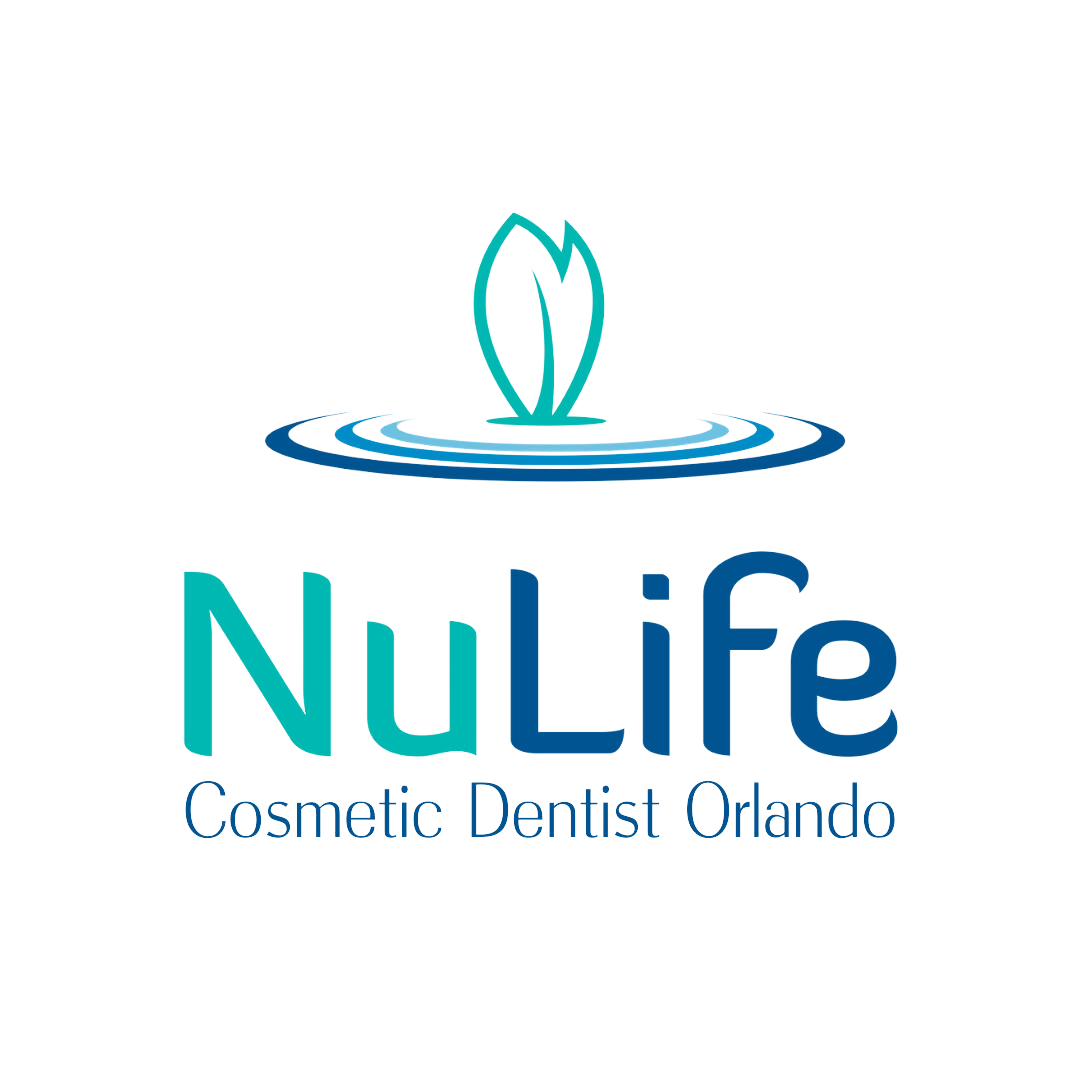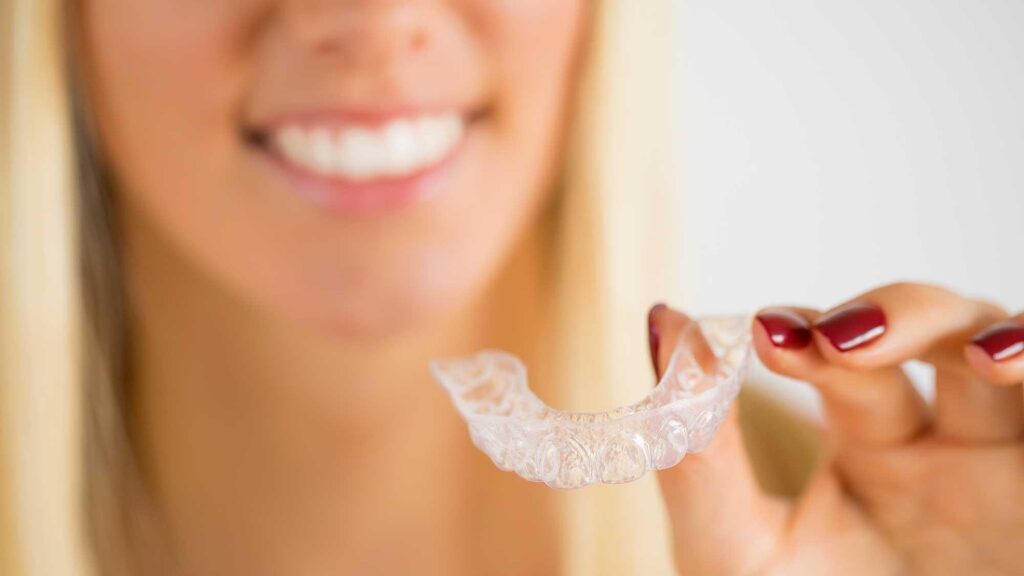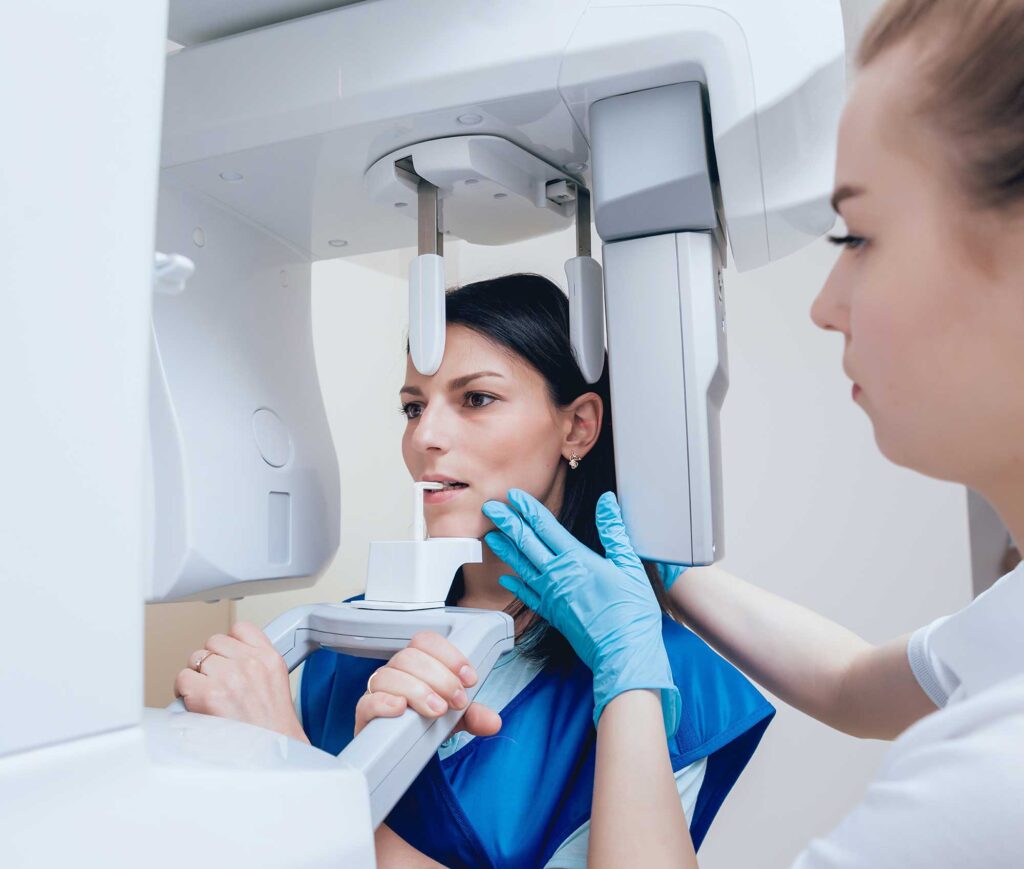

Wearing braces is truly essential for people who are experiencing certain types of dental problems. Therefore, it’s important that you find the best braces on the market. This article focuses on Invisalign invisible Aligners and will explain to you why it’s the better option in comparison to traditional metal braces. So, if you’re interested, keep reading to find out the ten reasons why Invisalign is better than traditional metal braces.
Invisalign aligners are practically invisible which makes it less obvious that you are wearing braces. A lot of people struggle with the way they look when they are wearing traditional metal braces so, in this regard, Invisalign is definitely the better option. They are designed in such a way that wearing these aligners won’t negatively impact your smile in the slightest. This is a big advantage in comparison to traditional braces because, with those, you won’t be able to hide the metal in your mouth at all. Therefore, with Invisalign, you can be guaranteed that you will not only look better while wearing braces, but it will also do wonders for your overall self-confidence.
It’s very easy to remove the Invisalign trays from your mouth when it’s necessary. Because of this, you can take them out when you’re eating or when you’re drinking.. This means that there aren’t any specific restrictions when it comes to your daily diet so you can eat anything you want. It doesn’t matter how sticky or hard the food is. This is a huge advantage when compared to traditional braces where you really need to be careful with what kind of foods you eat. For example, really hard foods could damage the metal and then you would need to get your braces repaired. With Invisalign, you don’t have that problem, making it more efficient in this department.
When you’re wearing metal braces, you will find that the metal can cause irritation because the metal can rub the inside of your mouth. That’s another problem that you won’t have with the Invisalign product. And, as mentioned above, you can take the aligners out which makes eating and brushing your teeth easier and more pleasant. In general, Invisalign doesn’t apply as much pressure on your teeth as is the case with traditional braces so this contributes to the comfortable feeling as well.
When you’re brushing your teeth, you can just take the Invisalign aligners out of your mouth, making it easier to thoroughly clean your teeth. With traditional braces, often there can be some food left between your teeth or even in the braces. Invisalign on the other hand solves this problem completely. You can take your Invisalign aligners out of your mouth when you’re eating and afterward, you can brush your teeth like you normally would. Both your Invisalign aligners and your teeth will be perfectly clean.
Another benefit of Invisalign braces, when compared to traditional braces, is the short amount of time that it takes for them to be effective. With traditional braces, it can take up to several years before your teeth are settled properly. However, when you wear the Invisalign aligners, you will find that it takes a lot less time before you have the teeth you always dreamed of having. You need to wear the aligners for 8 to18 months until you can stop wearing them completely. The reason for this shorter amount of time is that the Invisalign aligners will be changed out every 2 weeks so your treatment will be more effective. You will be able to have your ideal teeth in only a matter of time!
Invisalign aligners are not only great for setting your teeth straight, but they can help with other dental problems as well. Examples include issues like an overbite, an underbite, a crossbite, or protruding teeth to name a few. The reason for this is that Invisalign uses a very progressive technology that’s able to adapt to any kind of dental issue. This means Invisalign can be an asset to anyone, no matter the dental problem. Invisalign is very customer-orientated and can offer you the exact treatment plan to fulfill all of your needs. Traditional braces can solve a lot of dental problems as well but are generally less flexible and customizable than Invisalign.
In general, metal braces can be slightly painful when you’re wearing them. The metal can poke your skin and can be painful to your mouth, lips, and cheeks. They can even cause painful sores and blisters inside a person’s mouth. In this regard, Invisalign is a lot less painful. The design of the Invisalign aligners is so smooth that you will hardly be bothered by them so you are less likely to injure the inside of your mouth.
Invisalign uses a special computer technology that allows you to actually see a similar end result before you even start your treatment. Because of this technology, you will know how long you will need to wear the aligners and you will know what your teeth are going to look like once the treatment is over. This really gives Invisalign an edge over traditional metal braces. With traditional braces, there are many things that can go wrong while wearing them. If the treatment plan for metal braces doesn’t progress as it should, there’s the chance that you will have to wear the traditional braces longer than expected. However, when you wear Invisalign aligners, you will not be faced with any unpleasant surprises.
When you start the Invisalign treatment, your Dentist will provide you with many different aligner trays. Each tray is meant for a specific stage in your treatment plan. Every few weeks, you will need to replace your trays making this is a very independent treatment plan. You will only need to go to the dentist every 6 weeks or so to get a check-up because you will already have all the equipment you need to make the treatment work on your own. This is a big contrast to traditional braces. With traditional braces, you will need to visit the orthodontist more often to know if everything is going according to plan or to make repairs. Invisalign saves you time and will fit into your busy life!
With traditional braces, you often need to be careful while doing intense, physical activities and playing sports. There are many ways that exercising can damage metal braces. For example, when you’re playing soccer and a ball hits your face, the metal can be severely damaged and you will need to pay a visit to the orthodontist to get the braces fixed. That’s an issue that you won’t have when you’re wearing Invisalign aligners. When you need to exercise, you can just take the aligners out of your mouth and you won’t run the risk of damage. Afterward, you can just insert the aligners once more and go on about your day as usual!
Invisalign may cost the same as traditional metal braces, but that’s easy to forget when you look at all the advantages that it has to offer. Invisalign offers a great price-quality ratio and will definitely give you the best treatment when it comes to your teeth. If you’re debating between Invisalign and traditional metal braces, you should know that Invisalign is truly the best option on the dental market right now.
Related Dental Services: Dental Services

Medical technology grows by leaps and bounds every day, and this statement is just as true in the field of dentistry. Dental care has become more advanced with scanning used as a detector for tooth decay. However, your dentist is using this technology for more than just looking for cavities. These scanning devices are used in making virtual models of your mouth for the purpose of dental prosthetics. More than 3 million Americans have dental implants, and over 8 million teens and adults have been Invisalign customers. In order to ensure a perfect fit for Invisalign, and to ensure implants are properly fitted, 3D scanning is the standard used by the dental industry when designing and creating dental prosthetics.
For those patients seeking straighter teeth for cosmetic reasons or to correct an improper bite, 3D scanning and modeling is used in making Invisalign aligners. Align Technology’s Invisalign brand enhances and corrects a smile which does wonders for your self-esteem. What some people don’t realize is that it’s important to correct a bad bite. Fixing the problem prevents dental deterioration and other oral health issues. It’s very important to get the aligners correctly made and fitted for your mouth. Awkward dental impressions or trays are no longer used for creating a treatment plan. 3D scanning is the most accurate way of providing aligners that will work best in an Invisalign treatment plan.
Your dental professional will create a 3D image of your teeth using an iTero scanner, which is from the makers of Invisalign. The iTero Element Scanner is used to ensure the correct and perfect aligner is tailored for you. Everyone has a different gum line, and iTero scans ensure a perfect fit.
Dental implants are the closest you can get to natural teeth and are for those people who have lost a tooth or teeth due to decay or injury. They allow you to smile, eat, talk, and laugh without worry. Implants are made from titanium alloy, which is similar to what is used for knee replacements. The artificial tooth is placed in your jawbone by a connector and is made to bond with your natural bone. Because implants are a substitute for natural teeth, and because they are meant to be permanent as opposed to dentures, it’s incredibly important to design and fit the artificial tooth with care and precision. 2D scanning was once the way the implant was designed, but it was often inaccurate. 3D scanning and 3D modeling is the best technology for creating and placing implants The iTero Element scanner is used for implant modeling and placement and not just for Invisalign products. The iTero scanner is a common appliance used for designing other dental restoration products.
3D imaging is slowly becoming the standard when it comes to aligners and other orthodontics. It allows dentists to digitally construct a model of your teeth and skull in 3D. No molds, plaster, or trays are used in this process. This unique perspective allows dental professionals to interact with the model and anticipate any difficulties, to effectively diagnose problems, and prescribe the treatment that is necessary. 3D scanning is commonly used for cosmetic and reconstructive purposes such as implants, crowns, and bone grafts, but as mentioned, it is also used to create 3D models to customize aligners for teeth straightening and to create an orthodontic treatment plan.
The dental imaging process begins by scanning the lower half of the face to create the image. The most common and most reliable method of executing this is by a cone-beam computed tomography machine, or CBCT machine. Small beams of radiation are used to scan the mouth, which results in a digital image. These pictures or images are compiled and converted into a 3D model for dental treatments.
A 3D image made with the use of a CBCT machine can be used for simple diagnostics, showing angles of the teeth that may not have been visible with a 2D device. However, CBCT produced dental images can also be used for more complicated diagnostics, such as identifying degenerative conditions and potential issues in the future. In addition to using 3D dental imaging for diagnostics, it can be integrated with digital impressions of teeth. Technology enables a dentist or oral surgeon to take these impressions with excellent accuracy in order to create dental restorations. This allows for a seamless and near perfect plan for treatment.
Because of the high precision of the 3D scanner, there are several advantages it has over traditional 2D imaging methods:
How is the Imaging Used?
Dentists can more effectively treat patients when they digitize the workflow. An example would be if a patient requires an implant, their mouth can be scanned by a 3D scanner or possibly two different scanners. A CAD model of the patient’s mouth is generated and a digital model for the implant is created with the CAM software. The model is sent to a dental lab to be designed and constructed for use within a few days. This helps to make the process quicker than before. And with access to the digital model before surgery, the dentist or orthodontist can get familiar with the patient’s mouth before the surgery takes place. This is a huge advantage in saving time and ensuring accuracy. This digital workflow can be used for many procedures and dental restorations.
There is more than one type of 3D dental imaging used by clinicians and oral surgeons. Let’s go over the three main types and discuss how they improve workflow.
CBCT is short for Cone-beam computed tomography. Using small beams of X-ray radiation, they rotate on a 360-degree axis while taking pictures of the mouth and face. The process is very quick and non-invasive since it only needs to rotate once around your head while you stand still. It has a limited field of view, which limits radiation exposure. After the images are taken, they are combined to make a model of the mouth. CBCT is also used today in mammography because it is more effective and safer than CT scans or an MRI.
The intraoral scanner (IOS) is a handheld device used in dentistry for capturing direct optical impressions. They are basically cameras that aid in creating a map for constructing a 3D surface model. Most often, these scanners exist in the form of a “wand”, which the operator inserts into a patient’s mouth. One of the most common and versatile 3D scanners is the itero Element. It’s perfect for any practice involved in digital dentistry. It’s designed to connect with orthodontic labs, custom crowns, bridges, veneers, implant abutment, and chairside milling. It also has easy connectivity to CAD and CAM software.
Technologies such as digital intraoral scanning (also known as digital impressions) and designing framework with CAD software are enhancing the quality of implant therapy and improving restoration results. Patient anatomy can be understood with remarkable detail through the digital collection of 3D data, and procedures can be virtually planned by using this CAD software.
This 3D technology has also made 3D printing possible. The availability of printed veneers, crowns, copings, night guards, and bridge models in an extremely short amount of time has made visits to the dentist and dental care more affordable and efficient for the patient. Plaster models that have been made and stored in a dentist’s office can be copied by the 3D printer so the casts no longer have to be stored.
Dentists and orthodontists know that 2D technology is on its way out. Digital dentistry is the way of the future with 3D scanning devices. 3D services can be found in most any dentist’s office with cone beam computer tomography being quite common. It gives a great image of what’s going on inside your mouth. The efficiency helps in providing a better patient experience while at your dentist’s office. With the increasing popularity and technical advancement of dentistry, treatment plans can be created quickly and with more certainty than ever before.
You are currently browsing the archives for the Invisalign category.